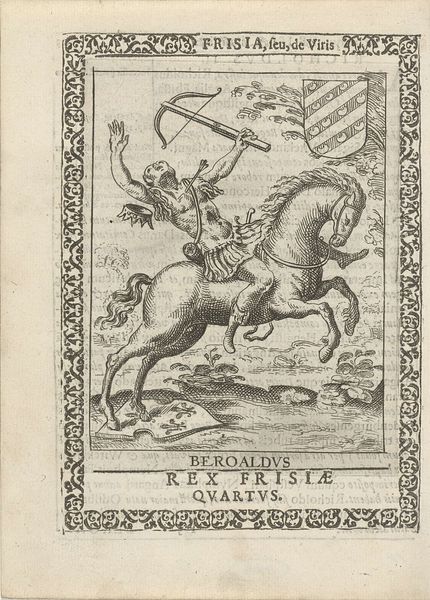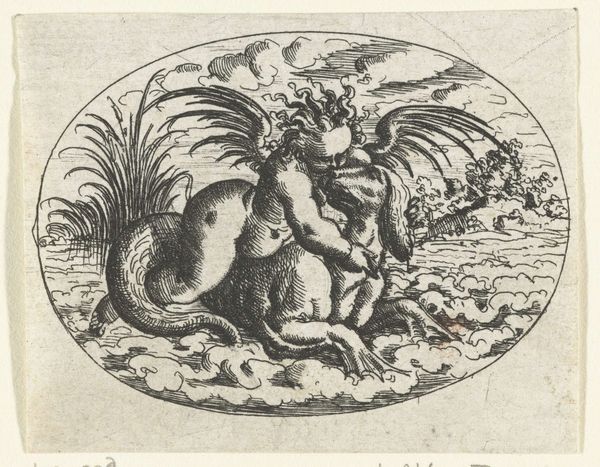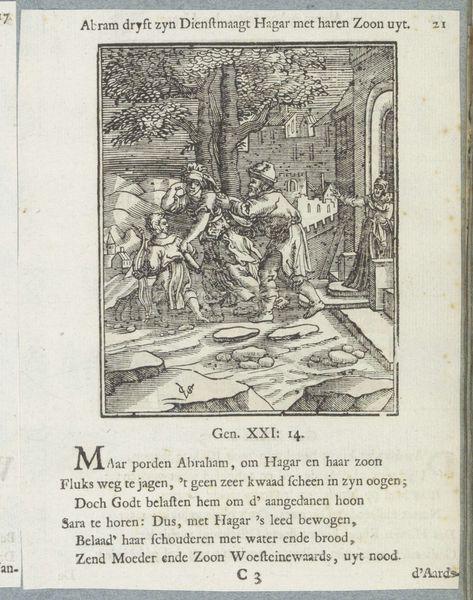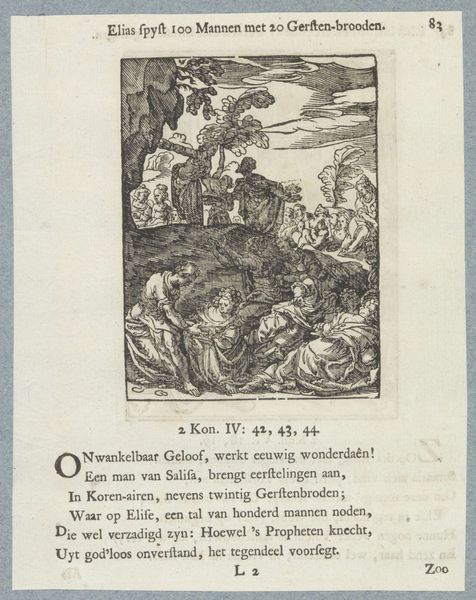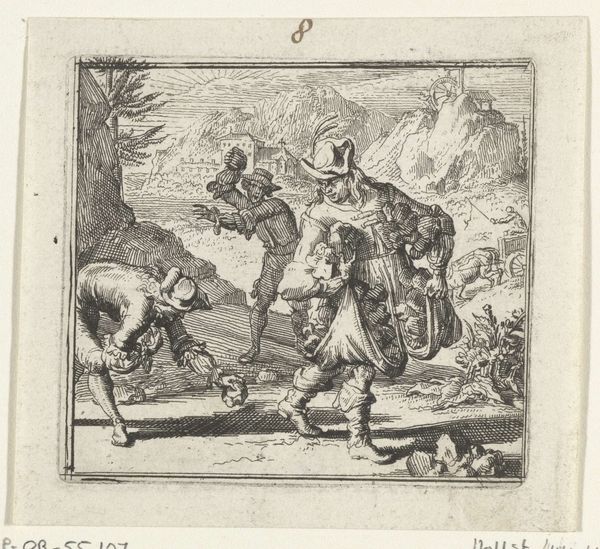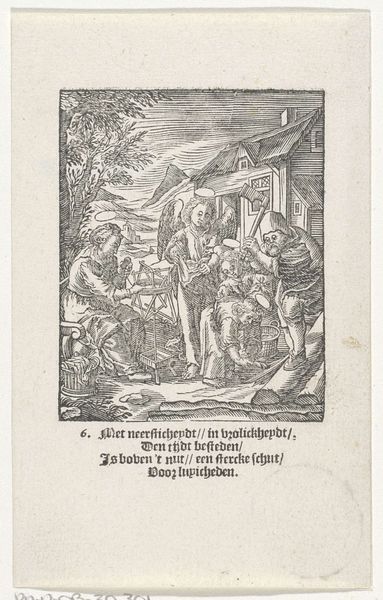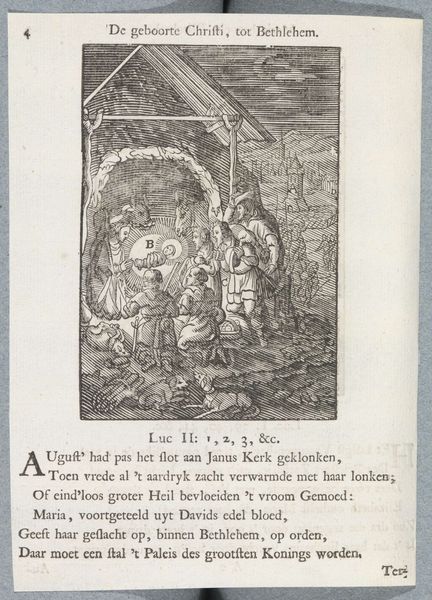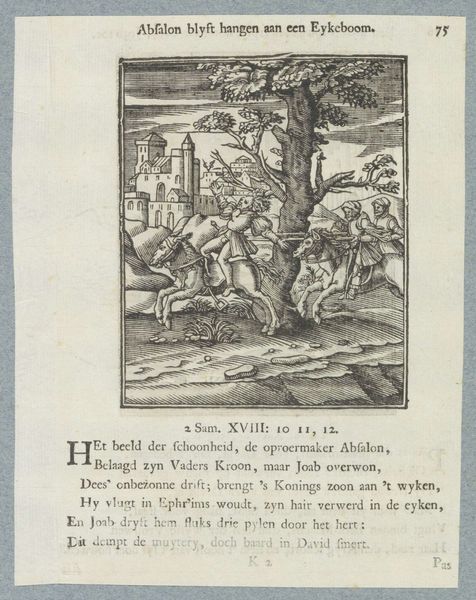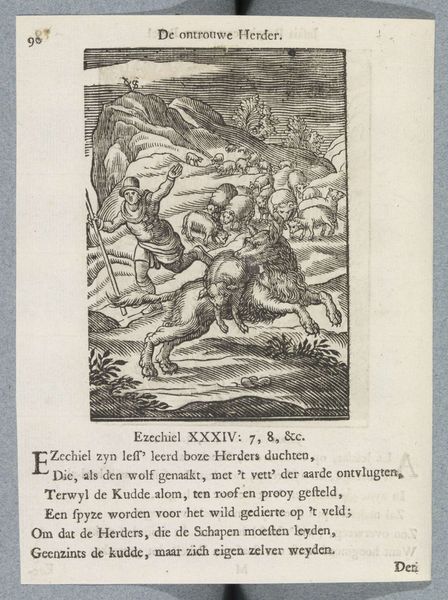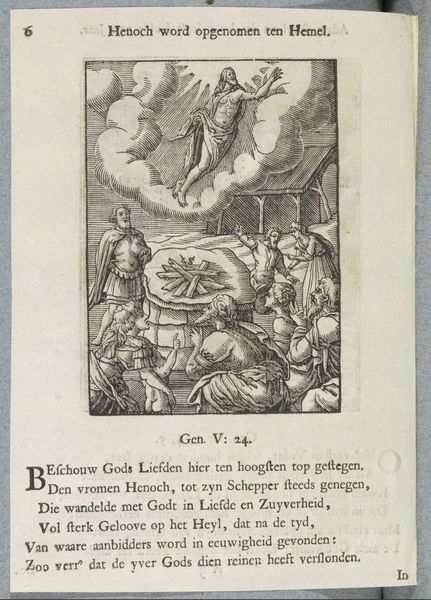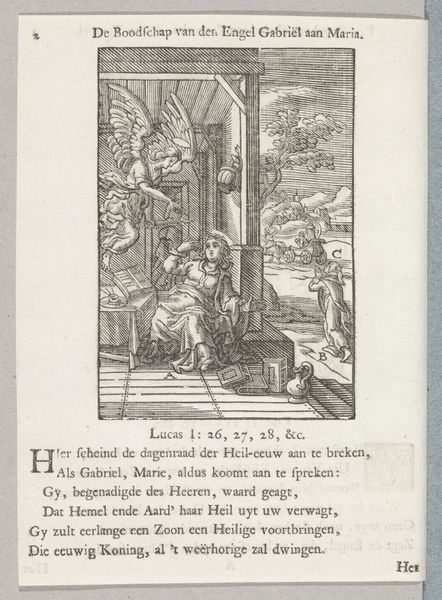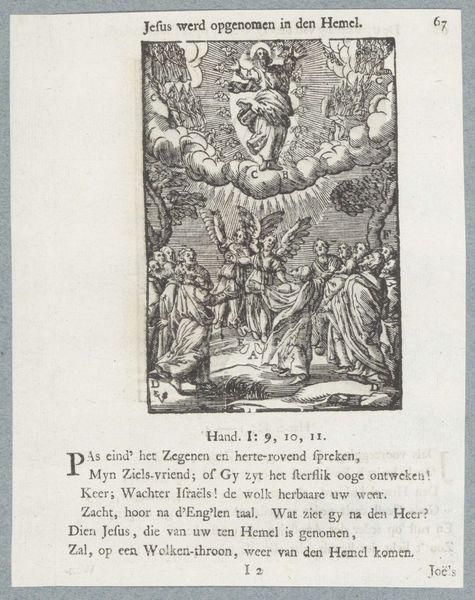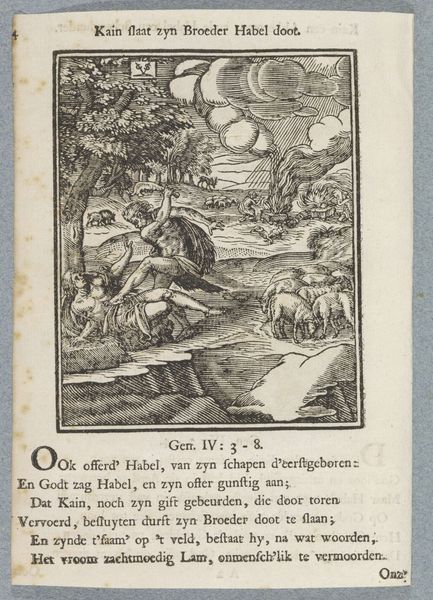
Titelblad voor het pamflet: Byeenkomst der Moogendheden in het Hof van den Leeuw, 1701 1701
0:00
0:00
print, engraving
#
aged paper
#
baroque
#
dutch-golden-age
# print
#
old engraving style
#
hand drawn type
#
personal sketchbook
#
thick font
#
history-painting
#
handwritten font
#
golden font
#
word imagery
#
engraving
#
historical font
#
columned text
Dimensions: height 175 mm, width 140 mm
Copyright: Rijks Museum: Open Domain
Curator: Welcome. We are looking at the title page of a pamphlet from 1701, "Byeenkomst der Moogendheden in het Hof van den Leeuw," or "Assembly of the Powers in the Court of the Lion" by Romeyn de Hooghe. Editor: Whew, quite a mouthful. It feels chaotic, doesn't it? Like all these animals are having a REALLY tense board meeting. All those spears! Curator: Indeed! De Hooghe was known for his allegorical prints, often commenting on the political climate. The gathering of animals likely represents the various European powers vying for control and influence at the turn of the 18th century. This imagery, in its totality, reveals a lot about the Dutch Golden age! Editor: I'm catching a sense of that... The lion probably symbolizes the Dutch Republic, right? Seated at the very center of power? And that poor unicorn looks like it really regrets attending. But hey, let's discuss font selection! Did people actually enjoy those kinds of title designs? Curator: Yes, to answer your questions, the title design is characteristic of the period. Its elaborate typography mirrors the ornate style of Baroque art, where complexity was often prized, in terms of written forms and social power. Also, it must be remembered that pamphlets were designed to be sold in volume and be extremely loud. And yes, historians would say the lion most certainly represents the Dutch Republic as the epicenter of trade and political meetings during that specific point in European history. Editor: Okay, interesting, especially the pamphlets aspect, although "loud" doesn't mean appealing to modern eyes... But getting back to the animals, they're quite expressive, which, perhaps, reveals a sense of personal skepticism by the artist himself? Curator: Possibly! Artists like De Hooghe did have leeway in interpreting events and subtly weaving in their perspectives. We should also not reduce this design merely to animals: notice the ways in which the columns of text complement the imagery to offer, collectively, a persuasive view of contemporary politics. Editor: Right, it’s not *just* cute animals. The whole thing screams "beware!" Curator: It is fascinating how art serves both as a document of events and also as a stage for opinion. Editor: Precisely. Thanks for highlighting the different aspects that give historical engravings character and personality.
Comments
No comments
Be the first to comment and join the conversation on the ultimate creative platform.
